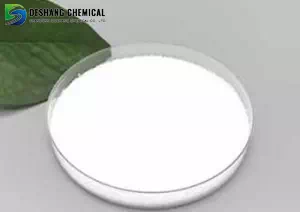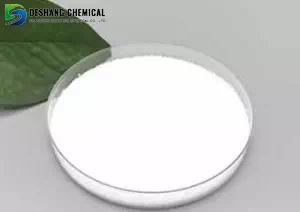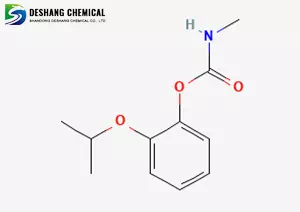All Categories



Propoxur CAS 114-26-1 Baygon, Propoxur, CAS 114-26-1 Baygon
As a highly efficient carbamate insecticide, the core value and risks of "Bulowei" (CAS 114-26-1) need to be scientifically balanced:Broad-spectrum rapid effect: Triple effects of contact killing, stomach poisoning and fumigation, knockdown speed comparable to dichlorvos, long-lasting effect.
CAS : 114-26-1
Formula : C11H15NO3
Mol. wt. : 209.24
EINECS : 204-043-8
| CAS | 114-26-1 |
| Molecular formula | C11H15NO3 |
| Molecular weight | 209.24 |
| EIENCS | 204-043-8 |
| Form | Minute Crystals |
| Melting point | 91°C |
| boling point | 348.6°C |
| Density | 1.12 |
| Solubility | Slightly soluble. 0.2 g/100 mL |
| PKA | 12.28±0.46(Predicted) |
| Color | / |
| Storage temp | 2-8°C |
Molecular formula and structure
Molecular formula: C₁₁H₁₅NO₃
Molecular weight: 209.24 g/mol
Chemical name: 2-isopropoxyphenyl-n-methylcarbamate
Structure: Carbamate compound, containing benzene ring, isopropoxy group and methylcarbamoyl group
Appearance: White to off-white crystalline powder with a slight special odor. Melting point of industrial products: 84-87℃
As a highly efficient carbamate insecticide, the core value and risks of "Bulowei" (CAS 114-26-1) need to be scientifically balanced:
Broad-spectrum rapid effect: Triple effects of contact killing, stomach poisoning and fumigation, knockdown speed comparable to dichlorvos, long-lasting effect.
Safety bottleneck: Highly toxic (rat LD₅₀≈100 mg/kg) and highly toxic to aquatic organisms. Strict protection is required during operation.
Mature technology: The yield of the methyl isocyanate method is 84%, and the raw material cost is controllable
1. Agricultural pest control
Core uses: Control of rice 螟虫, rice planthopper, cotton aphid, etc. Dosage: 3-7.5g /100m²
Powder spraying: 2-3% powder 225-338g /100m²
Spray: 0.05-0.1% emulsion or 15% emulsion diluted 400 times
Advantages: Knockdown speed is close to that of dichlorvos, long-lasting effect, and no internal absorption
2. Hygiene and storage Pest control
Target pests: mosquitoes, flies, cockroaches and external parasites
Application method: 1% suspension spray or poisoned bait (more efficient than dichlorvos)
3. Residue and Safety
Half-life: 1.5 days in tea and 1.9 days in soil (field experiment in Hubei)
Residue standard: No residue was detected in the tea when used within the safety interval. The limit for rice is 1.0mg /kg
1. Toxicological data
Acute toxicity
Oral LD₅₀ in rats: 90-128 mg/kg for males and 104 mg/kg for females
Oral LD₅₀ in mice: 100-109 mg/kg
Percutaneous LD₅₀ in rats: 800-1000 mg/kg
Ecological toxicity
The LC₅₀ of carp is greater than 10 mg/L, and that of the octopus is 15-30 mg/kg
Highly toxic to bees and poses a long-term risk to aquatic organisms (R50/53)
2. Safety Operation and Protection
Health risks: Inhibiting cholinesterase activity, causing nausea, blurred vision and dermatitis upon contact; Ingestion can be fatal (R25
Protective requirements
When operating, wear a gas mask, nitrile gloves, goggles and a gas suit
Eating is prohibited in the workplace. Eye-washing facilities and emergency shower devices should be provided
Environmental control
When leakage occurs, it should be adsorbed with sand and soil. The waste liquid should be disposed of as hazardous waste (S60/S61)
Avoid discharging into water bodies. Store in a cool and dark place (2-8℃).
* Prompt reply and 24 hours online, professional team to provide best price and high quality product.
* Sample testing support.
* Every batch of products will be tested to ensureits quality.
*The packing also can be according the customers` requirment.
*Any inquiries will be replied within 24 hours.
*we provide Commerical Invoice, Packing List, Bill of loading, COA , Health certificate and Origin certificate. If your markets have any special requirements, let us know.